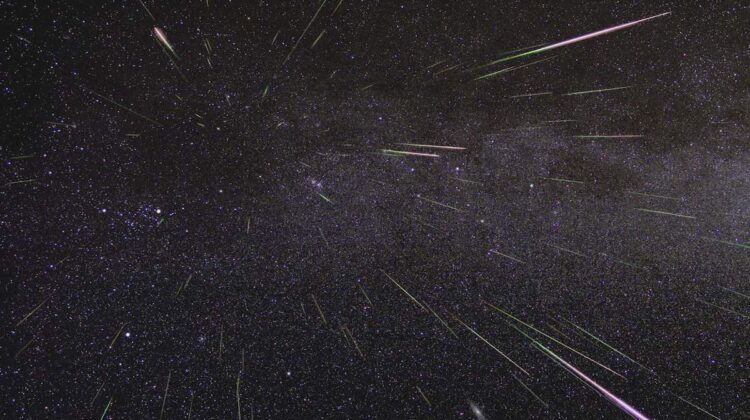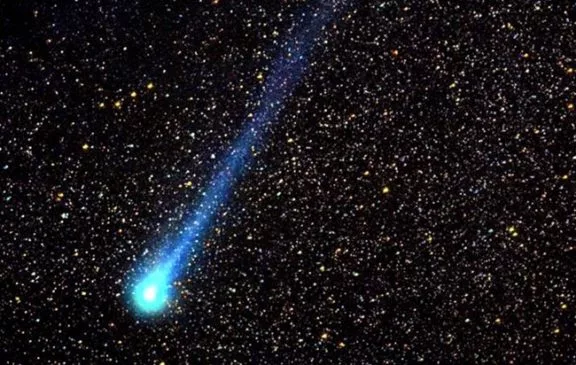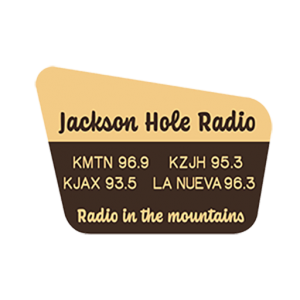
Witness the Night Sky Illuminate with the Spectacular Perseids Meteor Shower
- The Perseids Meteor Shower is an annual celestial event that dazzles skywatchers.
- This meteor shower is caused by debris from Comet Swift-Tuttle entering Earth’s atmosphere.
- Prime viewing time for this cosmic spectacle is Saturday night.
- Mostly clear skies are forecast for Jackson Hole.
According to NASA, this event occurs annually when the Earth passes through the debris left behind by Comet Swift-Tuttle. As these tiny particles collide with our atmosphere, they create bright streaks across the sky, popularly known as shooting stars.
The dark skies in Jackson Hole create an ideal opportunity to watch the meteor shower.

Weather to Be Perfect For Meteor Viewing
The weather forecast for Jackson Hole is expected to make for perfect conditions to see the Perseids. Mostly clear skies and breezy conditions are expected with a low temperature of 45 degrees. Bring a jacket and prepare to sit back and watch the show.
Perseids Weekend Weather Forecast
Friday Night
Mostly clear, with a low around 47. West wind 8 to 13 mph becoming south southeast in the evening.
Saturday
Sunny, with a high near 81. Breezy, with a south southeast wind 7 to 16 mph becoming west in the afternoon. Winds could gust as high as 24 mph.
Saturday Night
Mostly clear, with a low around 45. Breezy, with a west wind 5 to 15 mph becoming east after midnight. Winds could gust as high as 22 mph.
Sunday
Sunny, with a high near 79. Light and variable wind becoming northwest 6 to 11 mph in the morning.
Sunday Night
Mostly clear, with a low around 44. Northwest wind 6 to 11 mph becoming east after midnight.
Forecast from the National Weather Service in Riverton Wyoming
Prime Opportunity to See Shooting Stars
The Perseids Meteor Shower reaches its peak on Saturday, filling the night sky with a large number of meteors. That night will offer the best opportunity to witness meteors streaking through the Wyoming sky, as Earth’s orbit intersects with the comet debris cloud.
For those eager to see the meteor shower, make time the night of August 12th. During this time, find a location away from Jackson’s lights for optimal visibility. Lie back, allow your eyes to adjust to the darkness, and be patient. The Perseids Meteor Shower is known for its frequent outbursts, during which you might see up to 100 meteors per hour.

The Science of Meteors
While the Perseids Meteor Shower is cool to look at, there is real science at play as well. The debris left behind by Comet Swift-Tuttle is made up of of tiny rocks and dust particles. When these particles collide with Earth’s atmosphere at high speed, they heat because of friction, resulting in shooting stars.
You Can Listen to Meteors Too
Listening to Meteors on FM Radio: Tune in to Outer Space
BBC’s Sky at Night Magazine describes a novel way to experience the Perseids. Meteor trails, the streaks that shooting stars leave behind, reflect FM radio waves. These waves bounce off the trails and ounce back to radio receivers as faint signals. This phenomenon is due to the ionosphere, a layer high above Earth’s surface.
Listening to meteor echoes on an amateur radio is fairly easy.
How to Listen to Meteors on FM Radio: A Step-by-Step Guide
- Tune your FM radio across its frequency range, noting stations you can pick up.
- Identify an FM radio station that doesn’t broadcast on frequencies you can already hear.
- Aim for an FM radio station about 1,300km away for optimal results.
- This distance increases your chances of catching meteor-reflected radio waves.
- Use a compass to draw circles on a map: 200km, 1,300km, and 2,100km from your location.
- Find an FM radio station transmitting between the smallest and largest circles.
- Consider UK-based stations, even if not 1,300km away.
- Choose a station with high broadcast power (measured in kilowatts) for longer meteor echoes.
- Listen after midnight for best results, when human activity is lowest.
- Meteors are heard as quick bursts of speech, music, pops, or whistles.
- Earth’s rotation after midnight exposes us to more meteoroids, resulting in brighter trails.
Listening to meteors through FM radio waves unveils a cosmic symphony, a unique way to connect with the celestial wonders above.
- Changes Come to Jackson Hole’s Elk Refuge Hunt - October 8, 2023
- Victor Stabbing Leads to Attempted Murder Charge - October 3, 2023
- Grizzly Shot in Self Defense Near Yellowstone - September 29, 2023

